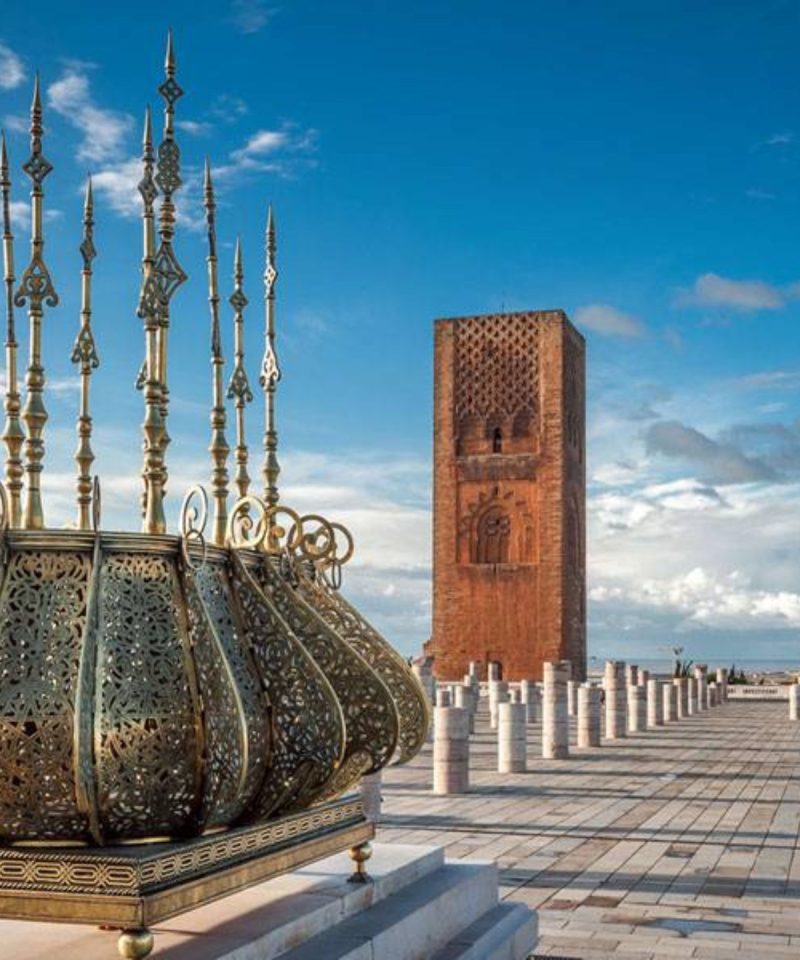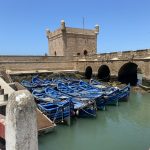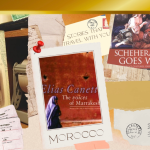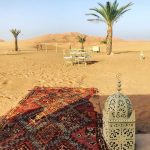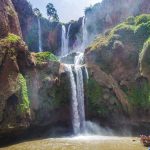History
Ancient Sala
In the first millennium BC the founded several trading colonies along the Atlantic coast of what is now Morocco, but the existence of a settlement in the area, called Sala or Shallat, has been debated by archeologists. By the first century BC the local inhabitants were still writing in the neo-Punic language, but the region came under the influence of . It was controlled by the ancient until it was formally annexed by Rome in the first century BC. On the site now known as , just south of the walled city today, the Romans built a city named Sala Colonia. Excavations have revealed that older Mauretanian structures existed on the site before Roman structures were built over them. Along with , Sala Colonia was one of the two main naval outposts held by the Romans on the Atlantic coast of the province. The port of Sala (now disappeared) was used by commercial Roman ships as a way station on their southwestward passages to and the Insula Purpuraria ().
Archaeological objects of and origin found in the area attest to the persistence of commercial or political contacts between Sala and Roman Europe, up to the establishment of a Byzantine presence in North Africa during the 7th century. However, Sala began to be abandoned in the 5th century and was mostly in ruins when the arrived in the 7th century and established Islamic influence in the region.
Medieval Islamic period
In the 10th century the of , or their allies in the region, founded a or fortified monastery/outpost in this area, to defend against the Berbers who had established a state to the south. This ribat was most likely on the same site as the current , but its location has not been confirmed by historians. Around 1030, a new town called Salā (the present ) was founded on the opposite side of the river (the north side) by the family.
One of the last emirs, (r. 1143-45) built a new ribat on the site of the current kasbah as part of his efforts to hold back the . Almohads nonetheless defeated the Almoravids and destroyed the ribat shortly after. In 1150 or 1151 the Almohad caliph built a new kasbah (citadel) to replace the former ribat, within which he included a palace and a mosque. This Almohad kasbah corresponds to the current Kasbah of the Udayas (which was expanded in later periods). Abd al-Mu’min also had an underground canal dug to divert a water source to this location, allowing for future settlement and urbanization in the area. The site became a military staging ground for Almohad armies setting out on campaigns to Al-Andalus.
The Almohad caliph (r. 1184–1199) embarked on an ambitious project to construct a new fortified imperial capital, called al-Mahdiyya or Ribat al-Fath, on the site of what is now the (old city) of Rabat, with new walls extending over a vast area beyond the kasbah. This project also included the construction of an enormous mosque (the remains of which include the ) and of new grand gateways such as and the main gate of the kasbah, now known as Bab Udaya or Bab al-Kbir. After al-Mansur’s death in 1199 the mosque and the capital remained unfinished and his successors lacked the resources or the will to finish it. The new city was never fully inhabited and the site was practically abandoned.
During the period (13th to 15th centuries), the town of across the river grew more important than the settlements of the south bank. In 1515 reported that Rabat had declined so much that only 100 inhabited houses remained.[] The Marinids did build a in what is now the medina of Rabat and on the nearby site of Chellah (ancient Sala) they built a royal necropolis for their dynasty.
Corsair republic
In 1609, decreed the of all (people of Muslim or descent) from . About 2000 of these refugees, originally from the town of near , Spain, settled around Salé and occupied the kasbah, attracting between 5000 and 14,000 other Moriscos to join them. Rabat and neighboring Salé united to form the in 1627. This autonomous republic became a base for : pirates, also known as the “”, who preyed on merchant ships around the shores of . During this time, the area below the kasbah on the south bank became more heavily populated, thanks to the Morisco and Andalusi refugees. A new “” was built to delimit this area in the northern part of the former Almohad walled city. What is now known as the Street of the Consuls became an important road artery even at this time. The name “Rabat” was not yet in use; the city of the south bank was known as “New Salé” while the city of the north bank was known as “Old Salé”. Corsair activities were based in New Salé, whereas the inhabitants of Old Salé generally did not participate in piracy.
‘Alawi rule
The pirates did not have to contend with any central authority until , the founder of the , conquered the area in 1666 and united most of Morocco under his rule. Nonetheless, the ‘Alawi sultans allowed the piracy to continue up until the reign of in the early 19th century. This led to the shelling of the city by in 1829 after an Austrian ship had been lost to a pirate attack.[]
During the early part of the ‘Alawi period (17th-18th centuries) the sultans took some interest in the city of the south bank and carried out constructions and repairs to the kasbah. (r. 1672–1727) expanded the kasbah southward and built a royal residence within it towards the end of the 17th century (it serves as a museum today). Moulay Isma’il was also responsible for settling a part of the Udayas (or Oudayas), a tribe (military tribe serving the sultan’s army), in the kasbah to serve as a counterbalancing force against other unruly tribes in the region.: 230 Under (r. 1757–1790) a new royal palace, the , was established in the southwest part of the Almohad walled area towards the end of the 18th century. These additions began to give the city the character and function of a royal residence used by the ruling dynasty outside their main capitals.
Moulay Slimane (r. 1792–1822) built another palace along the seaside called Dar al-Bahr and built new mosques such as the . He also ordered the creation of a Jewish quarter, the , in the eastern part of the Andalusian medina, in an formerly occupied by orchards. It was also towards the beginning of the 19th century that the city walls, formerly limited to the Almohad-era perimeter, were extended significantly to the southwest, thus expanding the city to cover around 840 hectares. The old Almohad walls and gates were still retained and the Almohad-era enclosure remained a more privileged district containing the city’s major monuments and its imperial residence. Most of the population remained concentrated in the medina behind the Andalusian Wall in the northern section. In the 1850s (r. 1822–1859) further developed and completed the Dar al-Makhzen palace in the southwest corner of this enclosure. At the end of the 19th century or beginning of the 20th century, the city had some 20,000 to 25,000 inhabitants.: 114
20th century
French invasion
The French invasion of Morocco began in the east with General ‘s occupation of March 1907 and in the west with the August 1907. The established the March 1912. Acting as French administrator of Morocco, , decided to relocate the country’s capital from to Rabat after the following the . In 1913, Lyautey hired who designed the Ville Nouvelle (Rabat’s modern quarter) as an administrative sector. When Morocco achieved independence in 1956, , the then , chose to have the capital remain at Rabat.
Post World War II
Following , the United States established a military presence in Rabat at the former French air base. By the early 1950s, was a installation hosting the and the , which oversaw forward basing for (SAC) aircraft in the country. With the destabilization of French government in Morocco, and Moroccan independence in 1956, the government of wanted the U.S. Air Force to pull out of the SAC bases in Morocco, insisting on such action after . The United States agreed to leave as of December 1959, and was fully out of Morocco by 1963. SAC felt the Moroccan bases were much less critical with the long range capability of the that were replacing the B-47s and with the completion of the USAF installations in Spain in 1959.
With the USAF withdrawal from Rabat-Salé in the 1960s, the facility became a primary facility for the known as Air Base Nº 1, a status it continues to hold.
Geography
Neighbourhoods of Rabat
Rabat is an administrative city. It has many shopping districts and residential neighbourhoods. The geographically spread out neighbourhoods are as follows:
The heart of the city consists of three parts: the Medina (old town); the Oudayas and Hassan both located to meet the ; and the Atlantic Ocean.
To the west, and along the waterfront, there is a succession of neighbourhoods.
First, around the ramparts, there is the old neighbourhoods, Quartier l’Océan and Quartier les Orangers. Beyond that, a succession of mostly working-class districts: Diour Jamaa, Akkari, Yacoub El Mansour, Massira and Hay el Fath are the main parts of this axis. Hay el Fath, which ends this sequence, evolves into a middle-class neighbourhood.
To the east, along the Bouregreg, the Youssoufia region (working and middle class) : Mabella; Taqaddoum; Hay Nahda (mostly middle class); Aviation (middle and upper middle class); and Rommani.
Between the two axes, from north to south, there are three main neighbourhoods (middle class to affluent): (Ward Building; a lively mix of residential and commercial buildings. The residents are predominantly upper middle class); (affluent villas; this neighbourhood has experienced a surge of momentum since the 2000s); and Souissi (residential neighborhood).
On the outskirts of Souissi, are a number of less-dense regions mainly comprising large private houses to areas that seem out of the city.
Culture
The biggest place for theatre is the Mohammed V Theatre in the centre of the town, which was opened in 1962. Construction on a new performing arts center, the , began in 2014. Designed by architect , it will reportedly be the largest theater in the and in Africa. It was scheduled to open in 2021.
Many organizations are active in cultural and social issues. Orient-Occident Foundation and ONA Foundation are the biggest of these. An independent art scene is active in the city. , which is the first independent space for visual arts created by Abdellah Karroum, opened in 2002 and introduced international and local artists. Other independent spaces opened few years after, such as Le Cube, also set up in a private space.
Mawazine
Mawazine is a music festival in Rabat organized under the auspices of King of Morocco, that started in 2001 where music groups, fans and spectators come together in a week-long celebration of culture and music both locally and internationally. Musicians such as , , , and many others have performed at the festival.
Mawazine was host to more than 2,500,000 in 2013. Workshops are available for teaching dances and other arts. The festival is free. However, while most areas are free, there are those that require payment, specifically the smaller stages being the historical site of Chellah, the Mohammed V National Theater, and the Renaissance Cultural Center.
Places of worship
The are predominantly mosques. The oldest mosque in the city is the “” (Jama’ al-‘Atiqa) in the Kasbah of the Udayas. It was originally founded during Abd al-Mu’min’s construction of the kasbah in 1150, though its current form mostly dates from an 18th-century restoration. Other important mosques include the in the old medina, also known as the el-Kharrazin Mosque, and the As-Sunna Mosque in central Rabat, originally completed in 1785 by Sultan Muhammad ibn Abdallah.
The last remaining in Rabat are the and the Talmud Torah Synagogue. There are also churches and temples, including an church and (Cathédrale de Saint-Pierre), which hosts the .
Museums and parks
The Oudayas Museum (also formerly known as the National Museum of Jewellery) is housed in a pavilion residence built by Sultan Moulay Isma’il (r. 1672–1727) inside the Kasbah of the Udayas. It was first opened in 1915, making it one of the oldest public museums in Morocco. Its collections, augmented by private donations, feature diverse objects from throughout Morocco, mostly from the 18th to 20th centuries. In 2006 it became the National Museum of Jewellery, with exhibits focusing on the history of Moroccan jewellery. As of 2019 it was under renovations to be transformed into a new museum to be called Musée du caftan et de la parure (‘Museum of the and adornment’).
The (formerly the National Archeological Museum) showcases the history of Morocco through a collection of archeological artifacts from the Punic, Mauretanian, Roman, and Islamic periods. This includes a collection of ancient Roman bronze and marble statuary from sites such as Lixus, , and Chellah, as well as coins, ceramics, and architectural fragments from the Islamic period.
The (officially called the Zoological Garden of Rabat) was opened in 1973, in part to house the lions that were previously kept at the Royal Palace. The lions are descended from the now-extinct . Since then the zoo has expanded to house some 1800 animals and has engaged in conservation efforts.
The Bank al-Maghrib Museum was inaugurated in 2002 and is housed at the Bank al-Maghrib building downtown. Its main exhibits include a collection of coins and currency from ancient times to the modern era, as well as a gallery of Orientialist art. The was inaugurated in 2014.
Historic monuments
The Kasbah of the Udayas (also spelled “Kasbah of the Oudaias”) is the oldest part of the present-day city, built by the Almohads in the 12th century. It was later refortified and expanded by the corsairs and the ‘Alawi dynasty in the 17th and 18th centuries.: 171 The kasbah is now a residential district with traditional houses painted white and blue on the outside. Its southern section includes the “Andalusian Garden”, landscaped in the 20th century.
The city’s historic walls were first built by the Almohad caliph Ya’qub al-Mansur and completed in 1197, with later additions in the 17th and 19th centuries. A number of monumental gates are found along the walls, the most notable being . The other Almohad-era gates are Bab el-Had, Bab al-Alou, Bab Zaers, and Bab al-Hadid, though many of them were modified in more recent periods.
The old medina, located below the kasbah and above the line of the Andalusian Wall, contains many historic mosques and traditional houses. The rest of the area within the Almohad walls but south of the Andalusian Wall was largely built up in the 20th century when Rabat became the capital during the French Protectorate. These districts contain numerous public buildings and apartment blocs built in contemporary styles of that period, such as (known as néo-Mauresque or arabisant in French), , , and .: 38–42 Examples of these include the building (built in the 1920s), the Central Post Office building (circa 1921, expanded in 1930s), the building (built in the 1920s), St.-Peter’s Cathedral (inaugurated in 1921, with later additions), the Rabat-Ville train station (early 1920s), and some of the apartment blocs on Rue Gaza (built or begun in the 1930s), among others.: 44–55 : 199
Overlooking the shores of the river is the Hassan Tower, a monumental unfinished constructed by Ya’qub al-Mansur in the late 12th century. It was built for an enormous mosque planned as part of the larger city al-Mansur was constructing. Across from the tower today, at the southern end of the mosque’s remains, is the (d. 1961), which houses the remains of King Mohammed V and . The mausoleum, completed in 1971, was designed in a neo-Moorish or Moroccan revivalist style by architect Cong Vo Toan.
A short distance south of the historic city walls is the archeological site of Chellah, a walled enclosure containing a 13th to 14th-century Marinid funerary and religious complex as well as the ruins of the Roman city of Sala Colonia. Across the river is the city of Salé, which also preserves a historic medina. The medina of Salé includes monuments from the Marinid period such as and the as well as landmarks from later periods.

